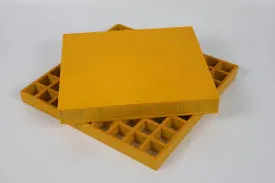
-
 Afrikaans
Afrikaans -
 Albanian
Albanian -
 Amharic
Amharic -
 Arabic
Arabic -
 Armenian
Armenian -
 Azerbaijani
Azerbaijani -
 Basque
Basque -
 Belarusian
Belarusian -
 Bengali
Bengali -
 Bosnian
Bosnian -
 Bulgarian
Bulgarian -
 Catalan
Catalan -
 Cebuano
Cebuano -
 China
China -
 China (Taiwan)
China (Taiwan) -
 Corsican
Corsican -
 Croatian
Croatian -
 Czech
Czech -
 Danish
Danish -
 Dutch
Dutch -
 English
English -
 Esperanto
Esperanto -
 Estonian
Estonian -
 Finnish
Finnish -
 French
French -
 Frisian
Frisian -
 Galician
Galician -
 Georgian
Georgian -
 German
German -
 Greek
Greek -
 Gujarati
Gujarati -
 Haitian Creole
Haitian Creole -
 hausa
hausa -
 hawaiian
hawaiian -
 Hebrew
Hebrew -
 Hindi
Hindi -
 Miao
Miao -
 Hungarian
Hungarian -
 Icelandic
Icelandic -
 igbo
igbo -
 Indonesian
Indonesian -
 irish
irish -
 Italian
Italian -
 Japanese
Japanese -
 Javanese
Javanese -
 Kannada
Kannada -
 kazakh
kazakh -
 Khmer
Khmer -
 Rwandese
Rwandese -
 Korean
Korean -
 Kurdish
Kurdish -
 Kyrgyz
Kyrgyz -
 Lao
Lao -
 Latin
Latin -
 Latvian
Latvian -
 Lithuanian
Lithuanian -
 Luxembourgish
Luxembourgish -
 Macedonian
Macedonian -
 Malgashi
Malgashi -
 Malay
Malay -
 Malayalam
Malayalam -
 Maltese
Maltese -
 Maori
Maori -
 Marathi
Marathi -
 Mongolian
Mongolian -
 Myanmar
Myanmar -
 Nepali
Nepali -
 Norwegian
Norwegian -
 Norwegian
Norwegian -
 Occitan
Occitan -
 Pashto
Pashto -
 Persian
Persian -
 Polish
Polish -
 Portuguese
Portuguese -
 Punjabi
Punjabi -
 Romanian
Romanian -
 Russian
Russian -
 Samoan
Samoan -
 Scottish Gaelic
Scottish Gaelic -
 Serbian
Serbian -
 Sesotho
Sesotho -
 Shona
Shona -
 Sindhi
Sindhi -
 Sinhala
Sinhala -
 Slovak
Slovak -
 Slovenian
Slovenian -
 Somali
Somali -
 Spanish
Spanish -
 Sundanese
Sundanese -
 Swahili
Swahili -
 Swedish
Swedish -
 Tagalog
Tagalog -
 Tajik
Tajik -
 Tamil
Tamil -
 Tatar
Tatar -
 Telugu
Telugu -
 Thai
Thai -
 Turkish
Turkish -
 Turkmen
Turkmen -
 Ukrainian
Ukrainian -
 Urdu
Urdu -
 Uighur
Uighur -
 Uzbek
Uzbek -
 Vietnamese
Vietnamese -
 Welsh
Welsh -
 Bantu
Bantu -
 Yiddish
Yiddish -
 Yoruba
Yoruba -
 Zulu
Zulu
fiberglass fitting
Understanding Fiberglass Fittings A Comprehensive Overview
Fiberglass fittings are essential components in various industries, particularly in construction, marine applications, and the manufacturing of chemical processing equipment. These fittings, made from a composite of glass fibers and resin, offer a combination of strength, durability, and corrosion resistance that makes them ideal for a wide range of applications.
One of the primary advantages of fiberglass fittings is their lightweight nature. Compared to traditional materials like metal and concrete, fiberglass is significantly lighter, which simplifies transportation and installation. This characteristic is especially beneficial in marine environments, where weight reduction can enhance the performance of boats and ships. Additionally, fiberglass fittings do not corrode in salty or harsh environments, making them a preferred choice for marine applications, including piping and storage tanks.
Moreover, fiberglass fittings exhibit excellent chemical resistance. In industries that handle corrosive substances, such as pharmaceuticals and petrochemicals, using fiberglass can prevent deterioration and extend the lifespan of the equipment. This durability translates to lower maintenance costs and fewer replacements over time, presenting a cost-effective solution for businesses.
fiberglass fitting

The manufacturing process of fiberglass fittings involves layering glass fibers with a resin mixture. This layering technique creates a strong bond that enhances the fitting’s structural integrity. Different types of resins, such as epoxy or polyester, can be used to suit specific environmental conditions and application requirements. When these materials are properly cured, they form a sturdy yet flexible product that can withstand significant stress and strain.
Fiberglass fittings are available in various shapes and sizes, allowing them to be tailored to specific projects. Common types include elbows, tees, reducers, and flanges. The versatility of these fittings enables their use in a variety of systems, including plumbing, HVAC, and industrial processing.
Furthermore, the installation of fiberglass fittings is relatively straightforward, often requiring fewer specialized tools compared to metal fittings. This ease of installation not only saves time but also reduces labor costs, making fiberglass a practical choice for engineers and contractors.
In conclusion, fiberglass fittings are a vital aspect of modern infrastructure, known for their lightweight, corrosion-resistant, and durable characteristics. Whether used in marine settings, industrial facilities, or residential construction, these fittings provide a reliable solution for ensuring the integrity and functionality of various systems. As industries continue to innovate, the demand for fiberglass fittings is likely to grow, solidifying their role as a cornerstone in manufacturing and construction technologies.









